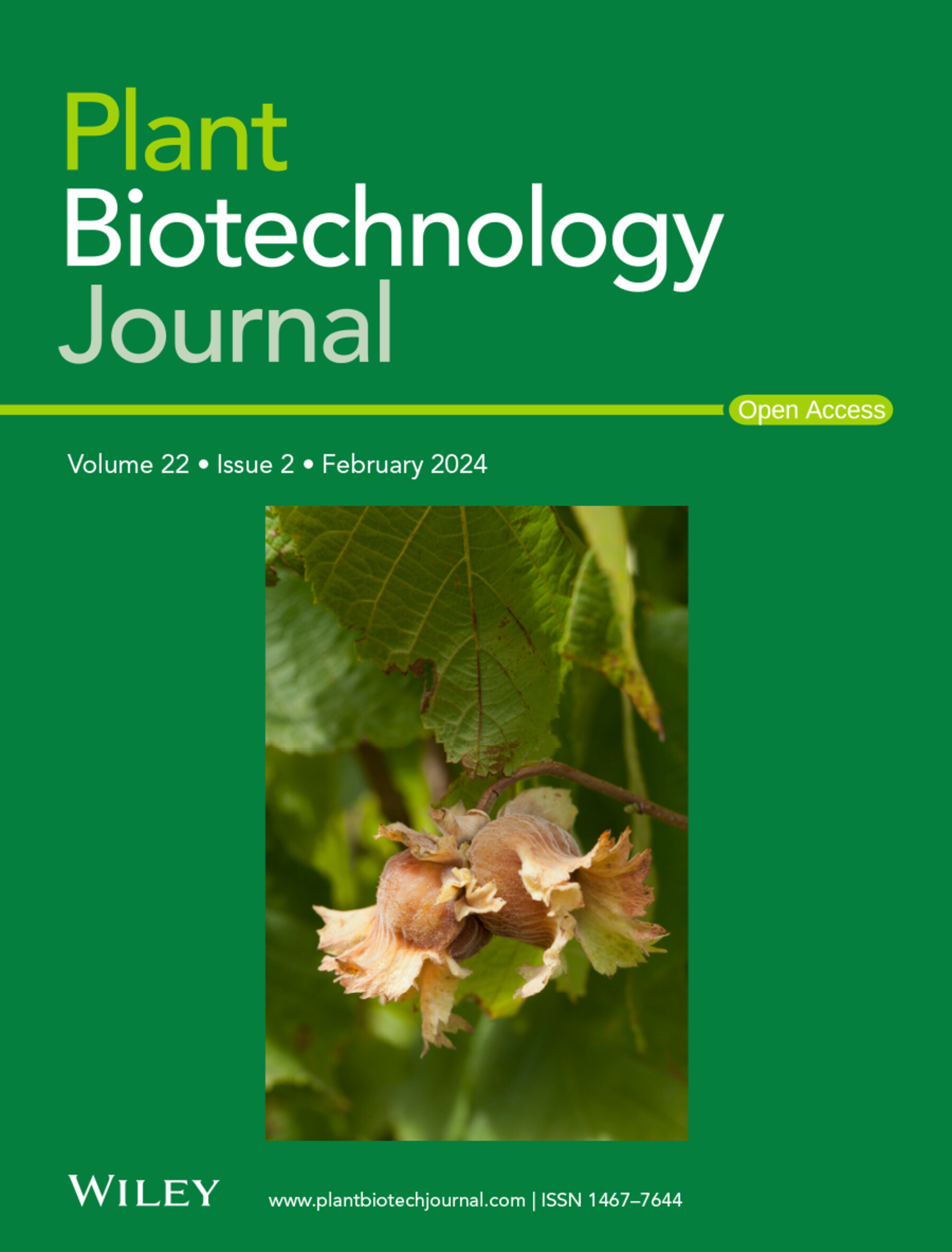CsYABBY1和CsMYB114通过介导茶树黄酮类生物合成增强获得性耐旱性。
IF 10.5
1区 生物学
Q1 BIOTECHNOLOGY & APPLIED MICROBIOLOGY
引用次数: 0
摘要
干旱启动是提高植物抗旱性的关键农艺策略,但茶树(Camellia sinensis)后续干旱响应的最佳启动强度和转录调控机制仍不清楚。在本研究中,我们系统地评估了不同启动强度下暴露于周期性干旱胁迫下的茶树。结果表明,与未启动对照相比,中度干旱启动具有更强的耐旱性。综合代谢组学和转录组学分析发现,类黄酮生物合成是与启动诱导的抗旱能力相关的关键途径。外源黄酮类化合物的应用和6个生物合成基因(CsCHS、CsCHI、CsFLS、CsDFR、CsANS和CsANR)的过表达从功能上验证了黄酮类化合物在干旱适应中的作用。值得注意的是,转录调节因子CsYABBY1和CsMYB114被鉴定为枢纽转录因子,显示出对类黄酮生物合成的转录激活潜力。组合过表达和沉默实验表明,CsYABBY1和CsMYB114协同上调类黄酮生物合成基因,将代谢通量转向类黄酮积累,从而增强耐旱性。通过酵母单杂交试验、双荧光素酶报告系统和电泳迁移转移试验以及分子对接等多模态验证,证实或模拟了CsYABBY1和CsMYB114与类黄酮生物合成基因启动子区域直接结合进行转录激活。这些发现建立了一个协同调控模型,CsYABBY1和CsMYB114通过转录重编程共同促进类黄酮积累,从而获得耐旱性。该研究为制定适应性栽培方法提供了机理见解,并推进了抗旱茶品种的分子育种策略。本文章由计算机程序翻译,如有差异,请以英文原文为准。
CsYABBY1 and CsMYB114 Enhance Acquired Drought Tolerance by Mediating Flavonoid Biosynthesis in Camellia sinensis.
Drought priming is a critical agronomic strategy for enhancing plant drought tolerance, yet the optimal priming intensity and transcriptional regulatory mechanisms underlying subsequent drought responses in the tea plant (Camellia sinensis) remain poorly characterised. In this study, we systematically evaluated tea plants exposed to recurrent drought stress under varying priming intensities. Results demonstrated that moderate drought priming specifically conferred superior drought tolerance compared to non-primed controls. Integrated metabolomic and transcriptomic profiling identified flavonoid biosynthesis as the key pathway associated with priming-induced drought resilience. Exogenous flavonoid application and overexpression of six biosynthesis genes (CsCHS, CsCHI, CsFLS, CsDFR, CsANS and CsANR) functionally validated flavonoids' role in drought adaptation. Notably, transcriptional regulators CsYABBY1 and CsMYB114 were identified as hub transcription factors demonstrating transcriptional activation potential towards flavonoid biosynthesis. Combinatorial transient overexpression and silencing assays revealed that both CsYABBY1 and CsMYB114 coordinately upregulate flavonoid biosynthesis genes, redirecting metabolic flux towards flavonoid accumulation to enhance drought tolerance. Multimodal validation through yeast one-hybrid assays, dual-luciferase reporter systems and electrophoretic mobility shift assays, as well as molecular docking, confirmed or simulated direct binding of CsYABBY1 and CsMYB114 to promoter regions of flavonoid biosynthesis genes for transcriptional activation. These findings establish a synergistic regulatory model where CsYABBY1 and CsMYB114 cooperatively enhance flavonoid accumulation through transcriptional reprogramming, thereby conferring acquired drought tolerance. This study provides mechanistic insights for developing adaptive cultivation practices and advances molecular breeding strategies for drought-resilient tea cultivars.
求助全文
通过发布文献求助,成功后即可免费获取论文全文。
去求助
来源期刊

Plant Biotechnology Journal
生物-生物工程与应用微生物
CiteScore
20.50
自引率
2.90%
发文量
201
审稿时长
1 months
期刊介绍:
Plant Biotechnology Journal aspires to publish original research and insightful reviews of high impact, authored by prominent researchers in applied plant science. The journal places a special emphasis on molecular plant sciences and their practical applications through plant biotechnology. Our goal is to establish a platform for showcasing significant advances in the field, encompassing curiosity-driven studies with potential applications, strategic research in plant biotechnology, scientific analysis of crucial issues for the beneficial utilization of plant sciences, and assessments of the performance of plant biotechnology products in practical applications.
 求助内容:
求助内容: 应助结果提醒方式:
应助结果提醒方式:


